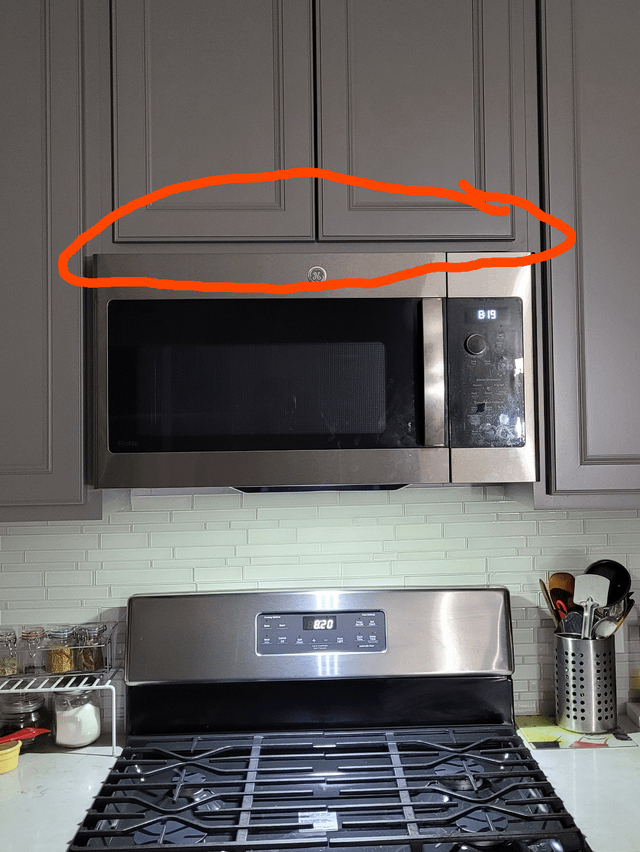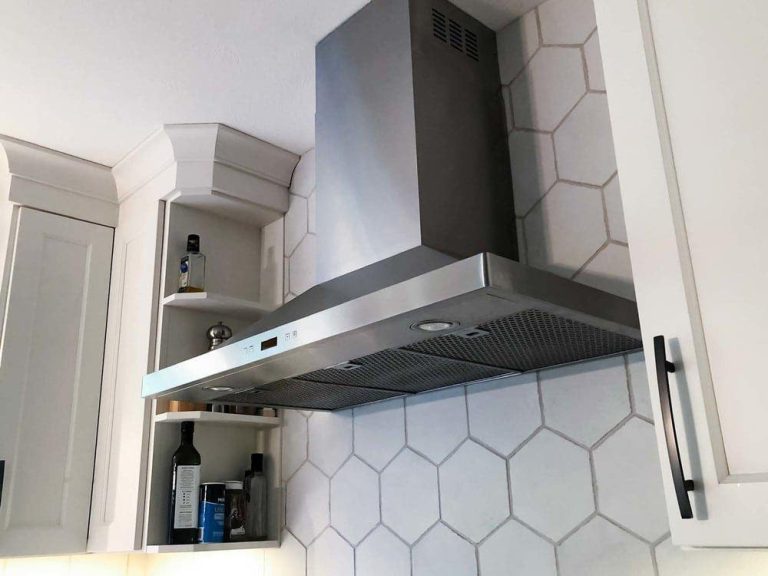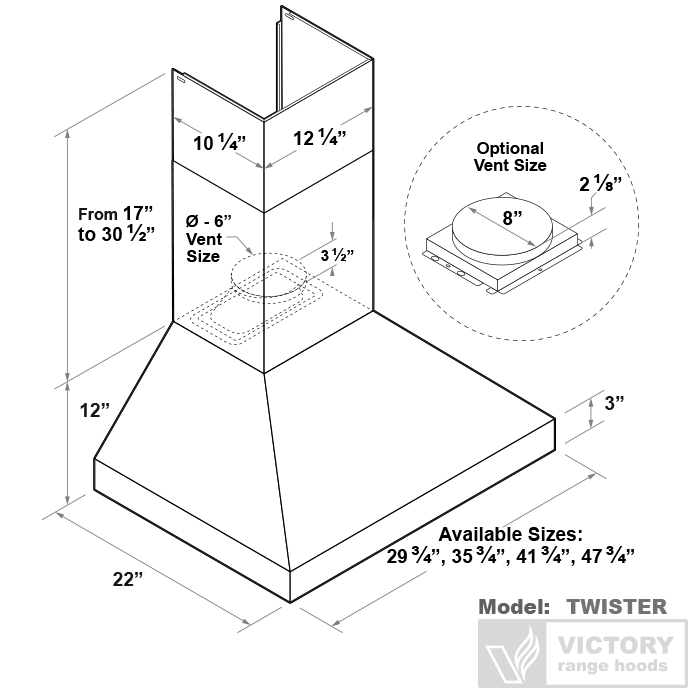Yes, 400 CFM can be enough for a range hood in a small to medium kitchen. It depends on your cooking habits.
Choosing the right range hood is crucial for maintaining a clean and odor-free kitchen. The CFM rating measures the airflow, indicating how efficiently a range hood can remove smoke, steam, and cooking odors. For most home kitchens, a 400 CFM range hood is sufficient, especially if you cook light meals or have a smaller kitchen space.
This airflow capacity can handle typical cooking activities and maintain air quality. Always consider your cooking frequency and the size of your kitchen when selecting a range hood. A higher CFM might be necessary for heavy cooking or larger kitchens.

Credit: www.homedepot.com
Introduction To Range Hoods
Range hoods help keep your kitchen air clean. They remove smoke, steam, and food odors. This keeps your kitchen smelling fresh. A good range hood also removes grease. This keeps your kitchen surfaces clean. Without a range hood, cooking can be messy and smelly. It is a must-have for any kitchen.
CFM stands for Cubic Feet per Minute. This measures the air flow of the range hood. Ventilation means moving air out of the kitchen. Filters catch grease and other particles. Ducted hoods move air outside. Ductless hoods filter and recirculate air. Knowing these terms helps you choose the right range hood.
What Is Cfm?
CFM stands for Cubic Feet per Minute. It measures the volume of air that moves. A higher CFM means more air is moved. This is important for range hoods. It helps in removing smoke and odors.
CFM plays a key role in range hoods. It helps to keep your kitchen air clean. A range hood with 400 CFM can handle most cooking tasks. It is great for medium-sized kitchens. It removes steam, smoke, and grease effectively.
Factors Affecting Cfm Needs
Several factors influence the cubic feet per minute (CFM) requirements for a range hood. Cooking frequency, kitchen size, and stove type determine if 400 CFM suffices.
Kitchen Size
A large kitchen needs more CFM. A small kitchen may need less CFM. Measure your kitchen to know its size. A big space means more air to clean. A small space has less air to clean.
Cooking Habits
Heavy cooking needs more CFM. Light cooking needs less CFM. Frying and grilling produce more smoke. Boiling and steaming produce less smoke. Frequent cooking adds up over time. Less frequent cooking needs less power.

Credit: prolinerangehoods.com
Calculating Cfm Requirements
Determining if 400 CFM is adequate for a range hood depends on kitchen size and cooking habits. Larger kitchens or frequent high-heat cooking may need more airflow to ensure proper ventilation.
Step-by-step Guide
Measure the width of your stovetop in inches. Multiply this number by 10. This gives you the minimum CFM needed. For example, a 30-inch stovetop needs at least 300 CFM. If you cook a lot, you might need more CFM.
For gas stoves, find the total BTU of your burners. Divide this number by 100. This tells you the CFM you need. A stove with 40,000 BTU needs 400 CFM. More powerful stoves need more CFM.
Common Formulas
| Stovetop Width (inches) | Minimum CFM |
|---|---|
| 24 | 240 |
| 30 | 300 |
| 36 | 360 |
For gas stoves, the formula is different. Calculate the total BTU of your burners. Divide this number by 100. This gives you the CFM needed.
Is 400 Cfm Sufficient?
A 400 CFM range hood can handle light to moderate cooking. This includes boiling, steaming, and frying. It works well in small to medium kitchens. For heavy cooking, you may need more power. Grease and smoke are controlled effectively. Odors are also reduced.
Pros:
- Effective for small kitchens
- Handles light to moderate cooking
- Controls grease and smoke
- Reduces odors
Cons:
- Not enough for heavy cooking
- May struggle in larger kitchens
Comparing Different Cfm Ratings
Low CFM range hoods usually range from 200 to 400 CFM. They are best for light cooking. High CFM range hoods can go up to 1200 CFM. They handle heavy cooking and grilling. Low CFM units are cheaper but less powerful. High CFM units are more expensive but more effective.
Range hoods with higher CFM ratings are more efficient. They remove smoke and odors quickly. Low CFM hoods are quieter but less effective. High CFM hoods can be noisy but offer better performance.
Choosing The Right Range Hood
Range hoods come in various types. Wall-mounted hoods are popular. Under-cabinet hoods save space. Island hoods hang from the ceiling. Downdraft hoods are hidden when not in use. Each type has its own benefits.
Consider the CFM rating. It measures airflow. Higher CFM means better suction. Noise level is important. Quieter hoods are preferable. Size should match your stove. Filter type affects cleaning. Ducted or ductless options are available. Each feature impacts performance.
Installation And Maintenance
A range hood should be installed at the right height. This ensures it can capture all the smoke and fumes. Check the manufacturer’s guide for exact measurements. Use a level to make sure it is straight. Secure the hood to the wall with strong screws. Connect the hood to a power source. Always follow safety guidelines during installation. A wrong installation can reduce efficiency. Proper installation keeps your kitchen air clean and fresh.
Regular cleaning keeps the range hood working well. Clean the filters every month. Use warm soapy water to clean grease filters. Replace charcoal filters when they are dirty. Check the fan and motor for any issues. Make sure the vent is not blocked. A well-maintained hood lasts longer and works better. Regular checks help spot problems early. Keep your kitchen air fresh and healthy.

Credit: www.pinterest.com
Conclusion
Choosing the right CFM for a range hood is crucial for kitchen ventilation. For most home kitchens, 400 CFM is adequate. It effectively removes smoke, odors, and grease. Always consider your cooking habits and kitchen size. Consult a professional for tailored advice.
Ensure your kitchen remains fresh and healthy with the right range hood.






